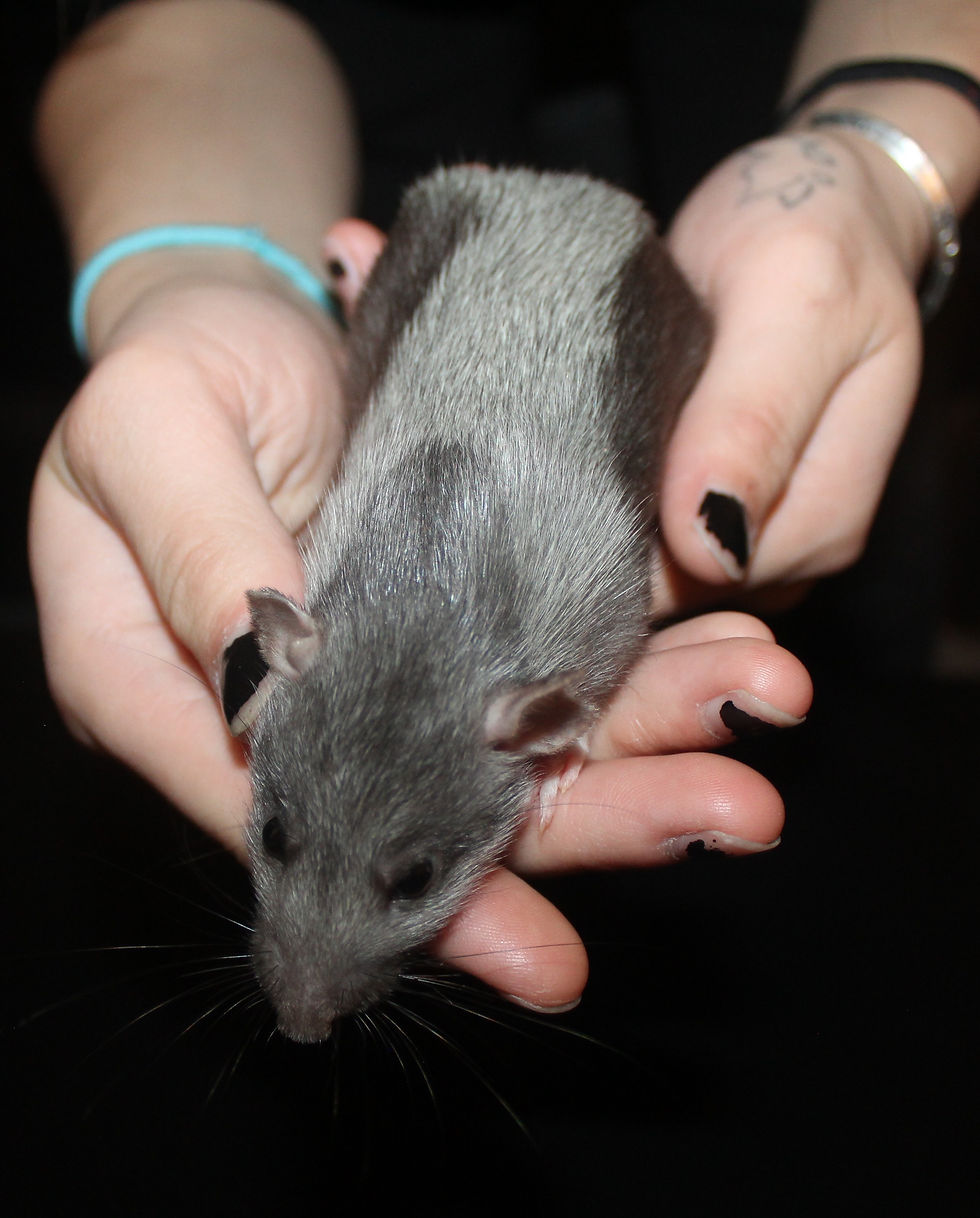How to Determine the Optimal Cleaning and Maintenance Schedule for Your Pet's Habitat
- StormHaven Rattery

- Jun 16
- 4 min read
Updated: Aug 22

Maintaining a clean and healthy environment for your pet is crucial for their overall well-being. A tidy living space not only prevents the buildup of dirt and harmful bacteria but also contributes to a happier and more comfortable habitat for your furry friend. In this post, we will explore the recommended cleaning frequency for various parts of your pet's habitat, such as the cage, feeding bowls, water bottles, toys, hiding spots, and hammocks.
Understanding the Importance of a Clean Habitat
A clean habitat is vital for all pets. It helps to reduce odors and prevent the spread of diseases, while also keeping your pet safe from harmful bacteria and parasites. For example, a study found that environments with high levels of bacteria can increase the risk of infections in pets by up to 50%. Moreover, a tidy space encourages your pet to explore and engage with their surroundings, leading to better physical and mental health.
Key Considerations for Cleaning
When determining the optimal cleaning schedule, consider factors like your pet's type, your home's conditions, and how often you interact with your pet. Each element of your pet’s habitat requires specific care and attention.
Cleaning the Cage: Frequency and Tips
Frequency: As a general guideline, clean your pet’s cage once a week. However, if your pet tends to be messier, consider spot cleaning every few days to maintain hygiene.
Tips:
Remove Uneaten Food Promptly: For instance, if you have a hamster that often leaves food remnants, do not wait more than a day to remove it. This can significantly reduce bacteria growth.
Use Safe Cleaners: Opt for pet-friendly cleaning solutions, steering clear of toxic chemicals. Vinegar and water can be effective and safe choices.
Establish a Routine: Think of cleaning as part of your weekly schedule, similar to taking out the trash or doing laundry. This will help you stay consistent and keep your habitat looking its best.
Feeding Bowls: Keeping Them Spotless
Frequency: It is essential to clean your pet's feeding bowls daily. Dirty bowls can harbor harmful bacteria, which may lead to illness.
Tips:
Material Matters: Stainless steel or ceramic bowls are preferable options as they are easier to clean and do not leach harmful chemicals like some plastics can.
Daily Cleaning: After each meal, rinse off food particles. Make it a habit to wash the bowls with warm, soapy water every evening.
Check for Wear: Replace bowls showing scratches or signs of wear, as these can hide bacteria.
Water Bottles: Maintaining Freshness
Frequency: Clean water bottles at least once a week; however, look at the water daily for clarity and cleanliness.
Tips:
Rinse and Refill Daily: For instance, if you notice any algae forming, replace the water right away to prevent your pet from drinking contaminated water.
Bottle Brush for Deep Cleaning: Use a bottle brush to ensure the inside is free from residues. This will help keep the water clean and fresh.
Consider Alternatives: If your pet is a type that enjoys bowls, change the water daily and clean the bowl frequently.
Toys: Keeping Playtime Safe
Frequency: Clean your pet's toys once a week. For toys that are used frequently, provide a mid-week refresh.
Tips:
Opt for Washable Toys: Check for manufacturer guidelines on how to clean your pet's toys. Many can be safely machine-washed.
Disinfect Non-Washables: For toys that cannot be washed, use a damp cloth and safe disinfectant to wipe them down regularly.
Toy Rotation: Regularly change the toys available to your pet. This practice not only aids in keeping them clean but also sustains their interest and engagement.
Hiding Spots: Ensuring Comfort
Frequency: The frequency of cleaning hides and bedding typically follows a bi-weekly schedule, depending on usage.
Tips:
Remove Waste Regularly: If you have a rabbit, for example, be diligent about removing soiled bedding to maintain cleanliness.
Use Proper Tools: A vacuum cleaner is handy for fabric hides, while hard surfaces can simply be wiped with a disinfectant.
Ensure Safety: Make sure that all materials used are non-toxic and comfortable for your pet.
Hammocks: A Cozy Spot
Frequency: Hammocks should be washed every two weeks. However, check for signs of wear and dirt, and clean sooner if necessary.
Tips:
Follow Washing Instructions: Most commercial hammocks can be thrown in the washing machine; just be sure to read the care label first.
Regular Inspections: Routinely look for signs of wear and replace hammocks if they show damage to ensure safety.
Material Choice: Using soft materials like fleece can enhance comfort for your pet.
Seasonal Cleaning Tips
As you decide how often to clean your pet’s habitat, consider these seasonal recommendations:
Spring: Perform a deep clean, replacing old bedding and introducing new toys to enrich your pet's environment.
Summer: Increase cleaning frequency, as warmer weather can lead to quicker buildup of bacteria and pests.
Fall: Prepare for more indoor time by ensuring their space is clean and inviting.
Winter: Regularly check heating in the habitat and prevent dampness, which can encourage mold growth.
Maintaining Your Pet's Habitat for a Happy Life
A clean and well-maintained environment is essential for your pet's health and happiness. By implementing a regular cleaning schedule for various components of their habitat, you can ensure a safe and comfortable living space. Always remember to adapt your cleaning frequency based on your pet's specific needs and behaviors.
With consistent care, you can create a clean sanctuary for your furry friend, protecting their well-being and ensuring they lead a joyful life.



Comments